It's a typically balmy November night in Canberra Nature Park. The air is laced with humidity and but for a few birds shifting in their roosts, it's eerily quiet.
One by one we turn off the fire trail and with our torches surveying the way ahead, like a group of wayward fireflies we venture deeper into the bush.
I've joined nature lover Lauren Ogden of Aranda and a couple of her like-minded friends for an after-dark adventure.
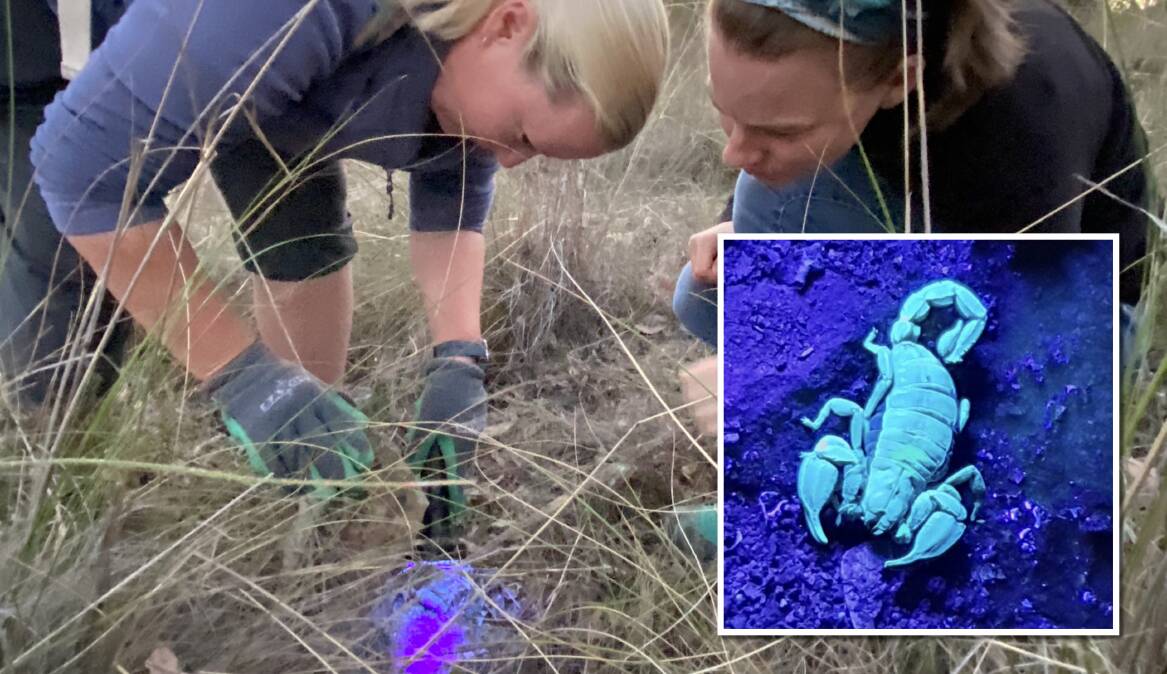
Most people bushwalk by day, including Lauren, who regular readers may recall is the Canberran who, obsessed with the ACT's mountain-top trig points, recently clambered to all 104 of them.
But tonight we on a very different mission. We are in search of scorpions.
Yes, those relatively small dark-coloured predatory arachnids that spend most of the day secreted away under rocks only to emerge at night to feed. Little wonder you rarely see them.
Now, you could easily be excused for assuming that trying to find one of these tiny critters in the dark would be a bit like looking for that proverbial needle in a haystack.
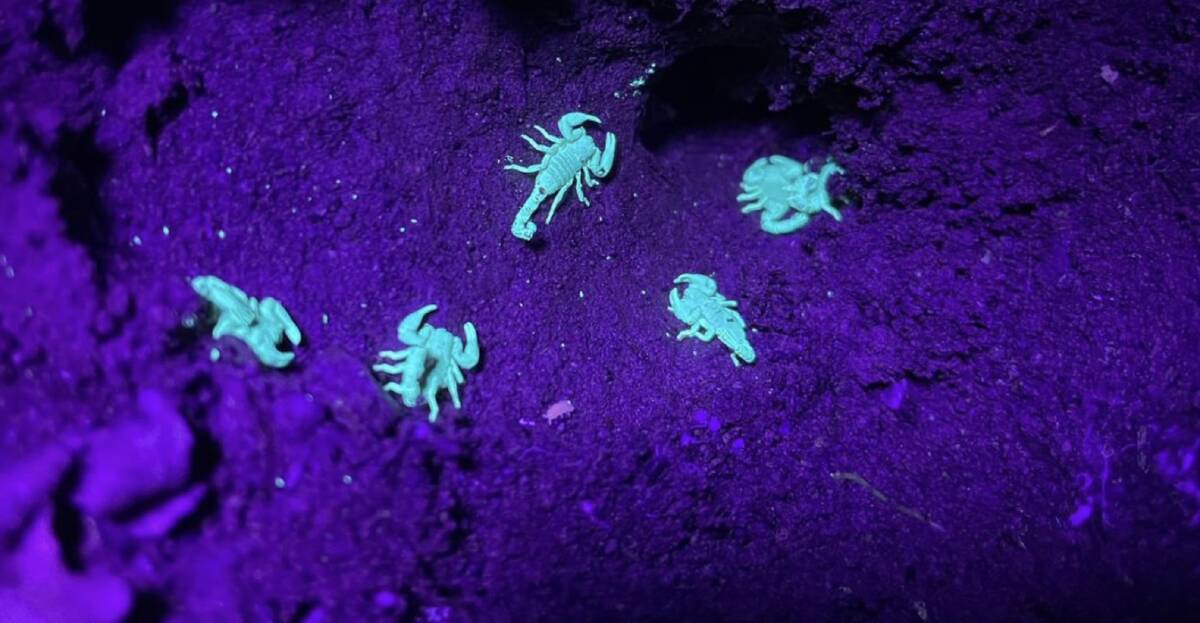
But not if you are wielding a black-light torch.
"Scorpions glow a brilliant aqua in the dark under ultraviolet [UV] light," explains Lauren as she starts fossicking in the leaf litter, looking for suitable rocks to peek under.
It was only after seeing a post on Facebook during COVID lockdown that Lauren even realised we had any of the much-maligned creepy crawlies in Canberra.
She was instantly hooked and has since embarked on about 15 field trips in bush close to Canberra's suburbs, even organising a group event for the Canberra Bushwalking Club.
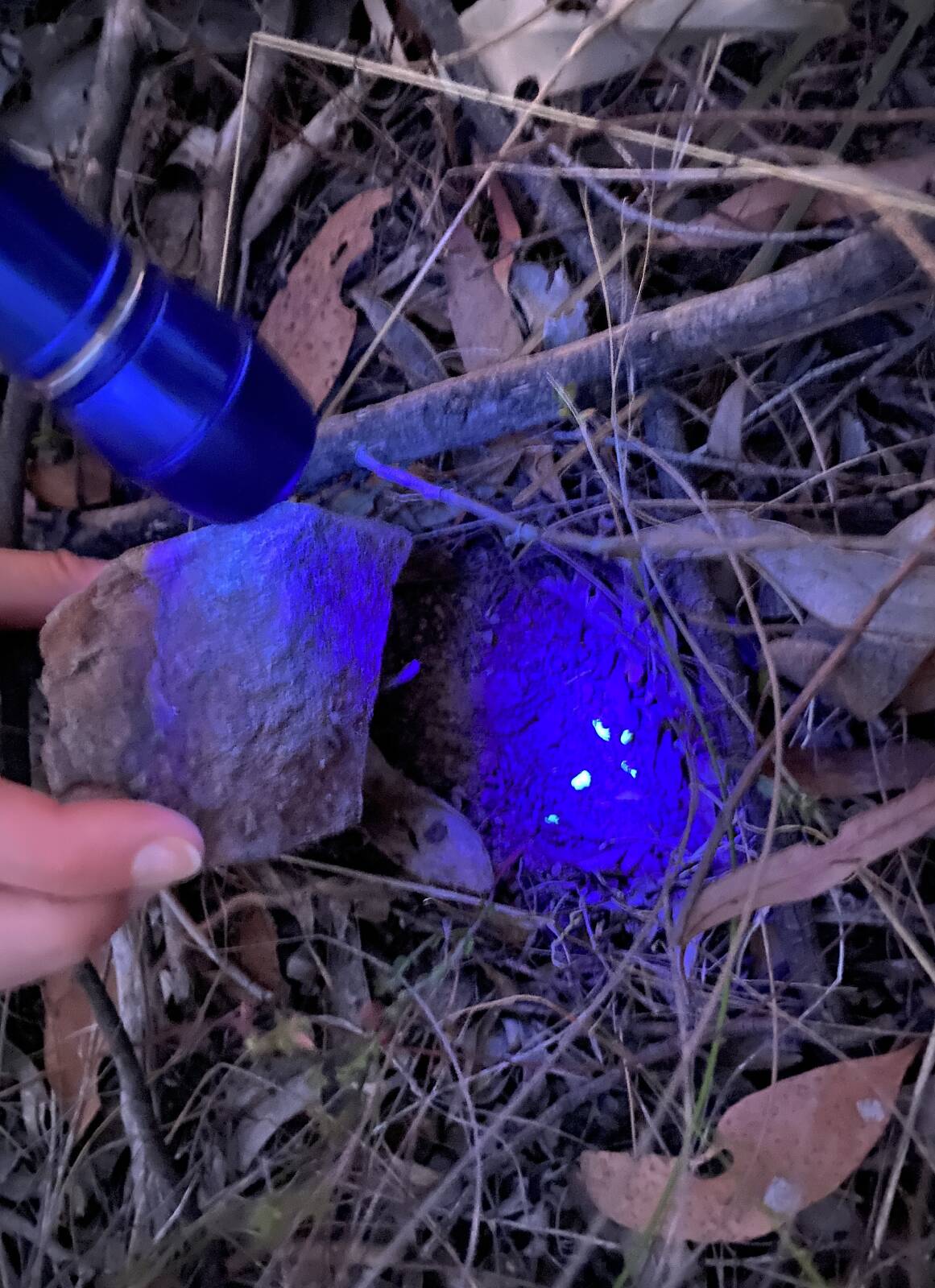
"After seeing some of my photos, now all my friends want to come with me," says Lauren as she dons a pair of heavy-duty gloves, ready to lift a rock or two.
The first few rocks she gently lifts reveal tiny flecks of that fluro aqua she told us to look out for. Could it be our first scorpion?
"Oh, that's just a bit of broken scorpion shell," explains Lauren.
But it's not long before Lauren's enthusiastic rock turning delivers the goods.
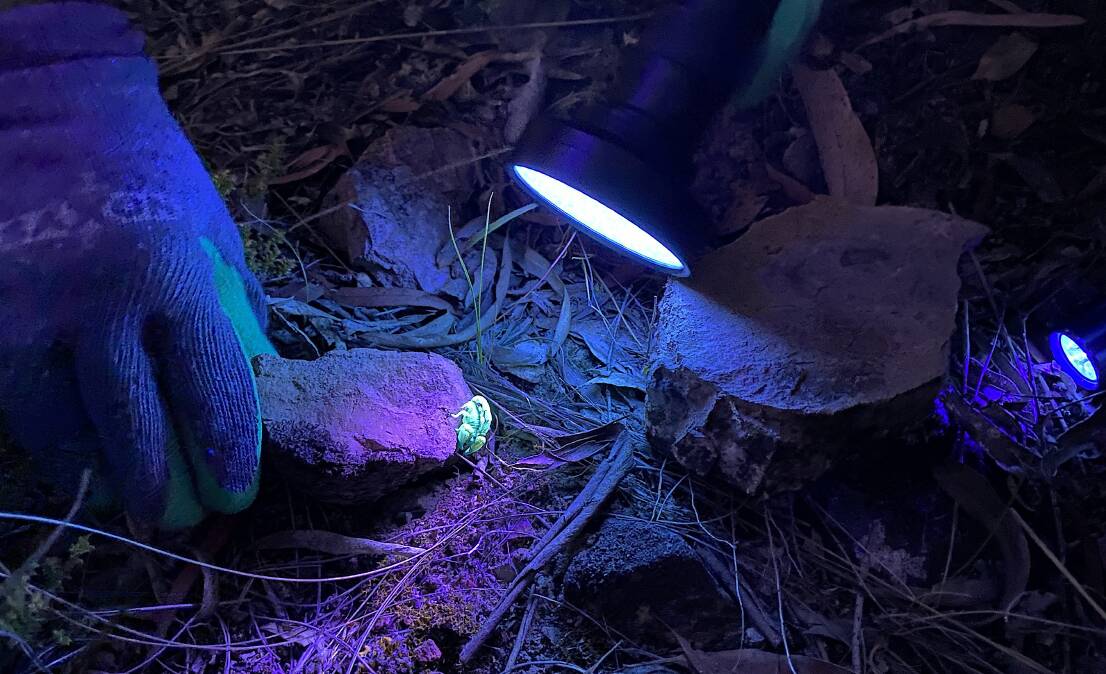
"Over here!" she hollers, her UV torch clearly illuminating a 4cm-long scorpion. You can't miss it!
Over the next hour we find about a dozen more scorpions, about half hidden under rocks, the other half out in the open, forging for their nightly feed. They are everywhere! At least the part of Canberra Nature Park we are in.
Lauren prefers I don't reveal the exact spot. She is worried about the impacts of "creating unwanted footpads" and "disturbing the scorpions' environment" if too many people flock to gawk at them at the same spot.
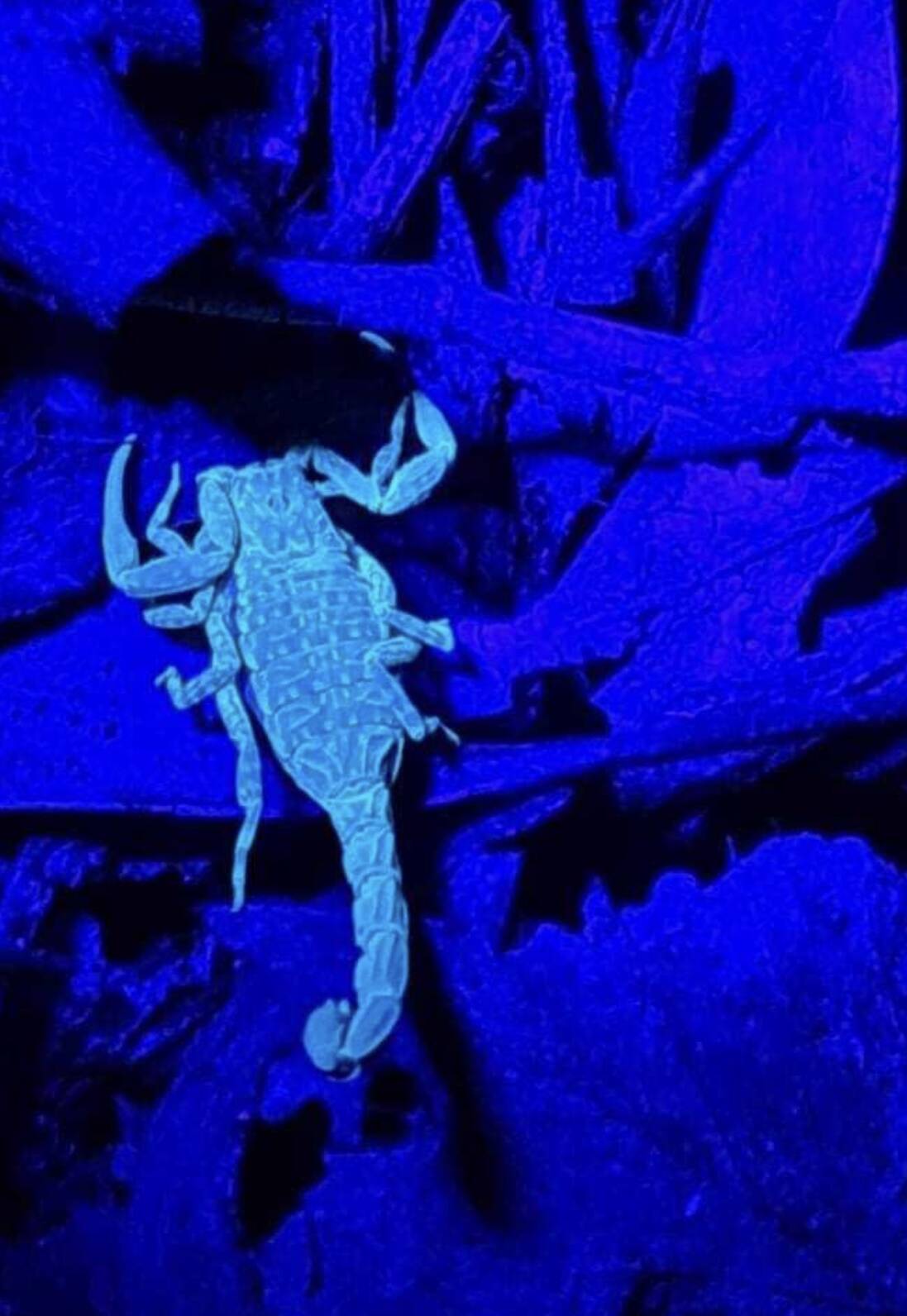
"I just like to know they are here, and not to annoy them in any way," she says. "It's just good to know what sort of creatures are in your backyard!"
But Lauren needn't be too concerned. According to Benjamin Shoard, an ANU masters student specialising in arachnids, "there are scorpions all over Canberra, and, of course, all wildlife is protected in all the nature reserves".
According to Benjamin, the two most common species in Canberra are black rock scorpions (Urodacus manicatus) and marbled scorpions (Lychas marmoreus) and they are relatively easy to differentiate. "Apart from their spotted appearance, marbled scorpions have much smaller claws," he explains.
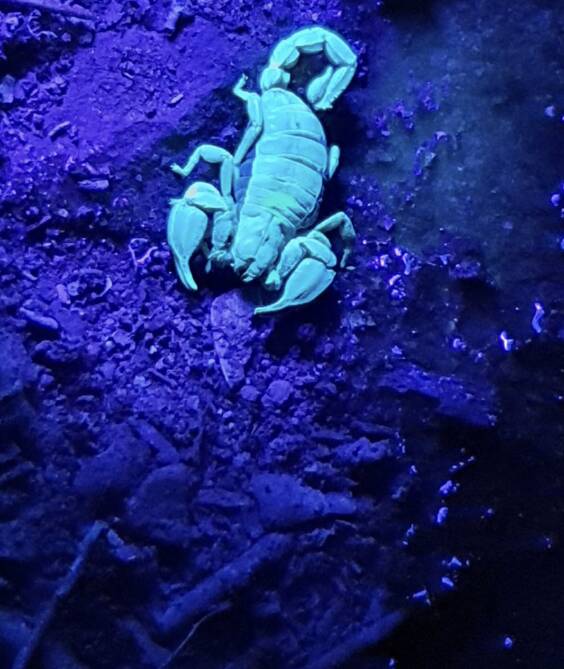
And yes, both species glow. In fact, according to Benjamin, "all known species of scorpion in the world have the ability to glow".
Unlike some living things including types of algae, fish and fungi which "bioluminesce", or create a glow themselves via a chemical reaction, scorpions "fluoresce" which means they only produce a blue-green light when exposed to ultraviolet rays.
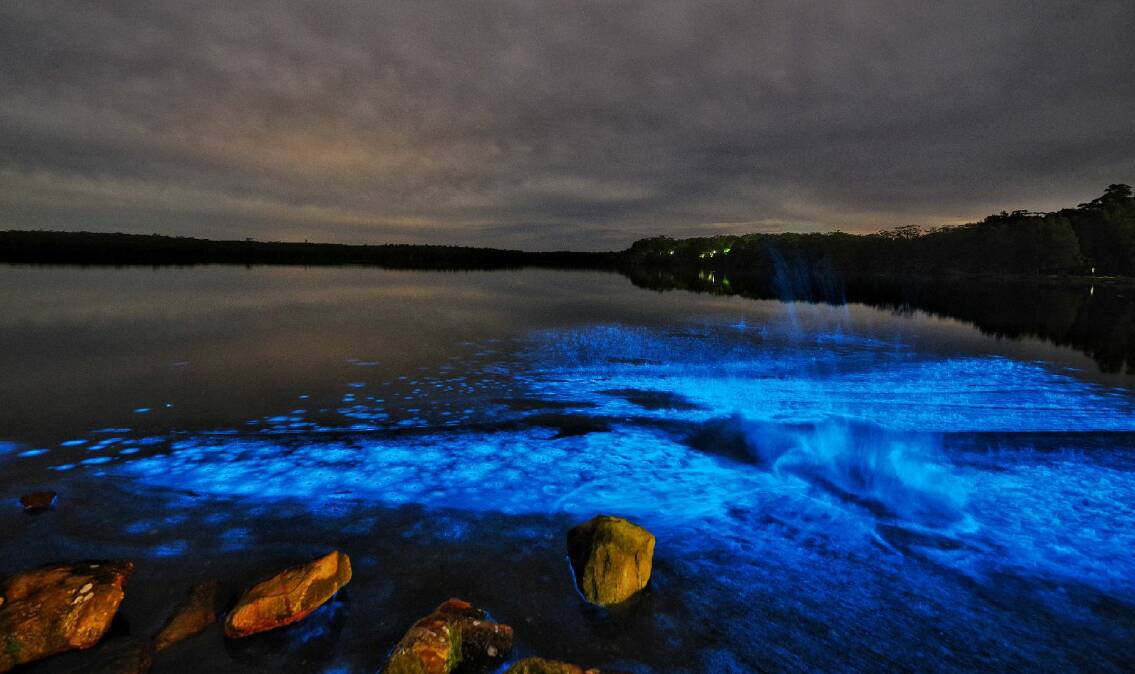
This glow in scorpions is caused by chemicals in their outer shell absorbing UV light and re-emitting it at a lower wavelength.
So, while we know how they fluoresce, why they do it is still a mystery.
Some scientists hypothesise the bright hues could be a part of an elaborate mating strategy while others suggest it serves as an ultraviolet sensitivity mechanism allowing the scorpion to avoid damaging light levels.
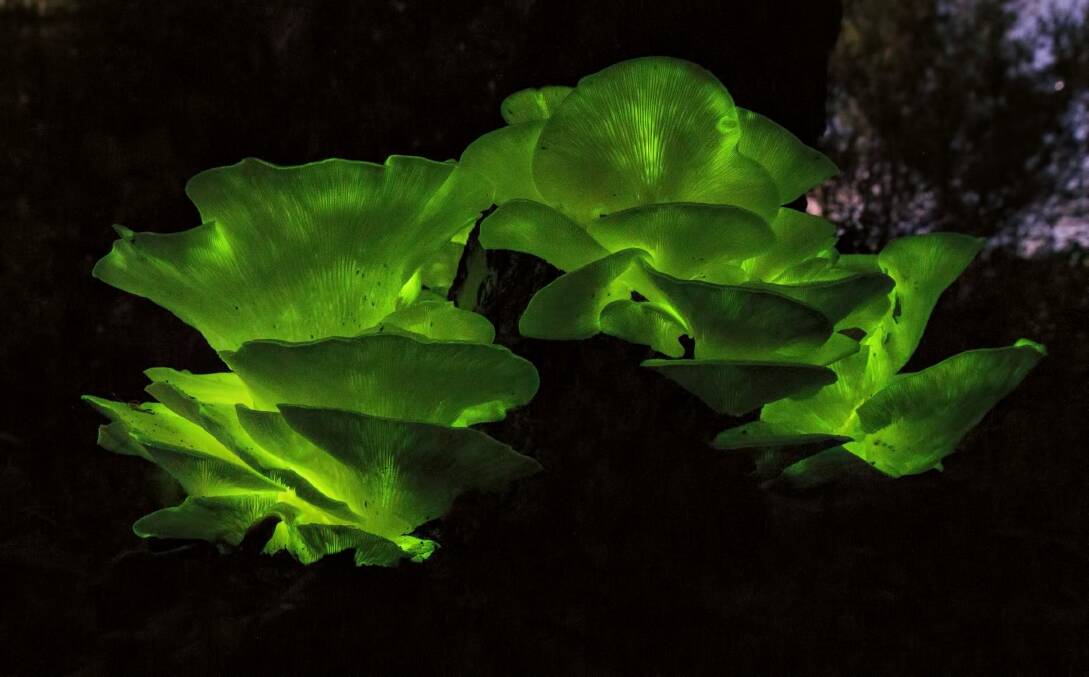
One thing is certain, the ability of scorpions to fluoresce makes it so much easier for scientists and budding naturalists like Lauren to spot them in the bush.
Benjamin has several tips for any wannabe scorpion searchers.
"UV lights have become more accessible and portable than in the past so just about anyone can go looking for scorpions now," he says. "I've even used one from a COVID test kit in the past."
He also warns against touching them.
"Although Australian scorpion bites aren't fatal to humans, the painful sting can lead to secondary infections."
Oh, and one last word of advice. "Always roll any rocks you move gently back into place, ensuring not to squash the scorpion or any other critters beneath it."
While Benjamin stops short of calling scorpions "cute", he bemoans the way they are often portrayed in popular culture.
"You'll get the odd one that throws out its claws and raises its tail but in the main they are quite beautiful creatures," he asserts.
He certainly won't find any arguments from Lauren, who, before we've even left the forest, is already planning her next after-dark scorpion search.
"I'm not obsessed by them, I just love seeing them," she laughs.
Ten fun facts about this special species
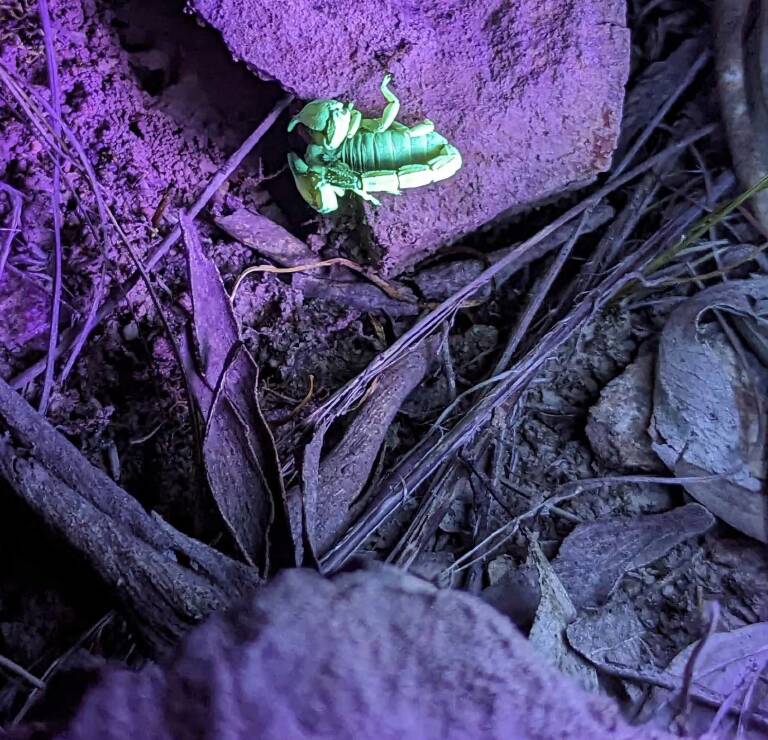
- Scorpions can be found on every continent except for Antarctica.
- Of the 2500 species of scorpions, only about 1 per cent are deadly to humans and thankfully none of these live in Australia.
- Living in many different places, from our deserts to woodland like that around Canberra, Australia is home to more than 100 species of scorpions.
- Australian scorpions range in length from 2cm to 12cm and are mostly nocturnal, spending their days hidden under debris such as bark and leaves or in burrows, often under rocks. This elusive behaviour means unless you are purposefully looking for a scorpion, you will unlikely see one.
- Scorpions are common arachnids and have eight legs like spiders, mites, and ticks.
- Despite having six to 12 eyes, scorpions do not have good eyesight but appear to have excellent low light sensitivity, which helps them to both avoid harsh sunlight and to navigate by starlight or moonlight.
- Scorpions don't only use their sting to kill their prey (cockroaches and smaller invertebrates), they also use it to defend themselves against predators such as snakes, lizards, and birds.
- If food is scarce, scorpions can slow down their metabolism to live off as little as just one insect per year.
- Scorpions predate the dinosaurs and some scientists believe they were the first animals to move from water to land hundreds of millions of years ago.
- Prehistoric fossils of scorpions found in Scotland show that their appearance hasn't changed over this time. They have, however, changed in size, with today's scorpions measuring half the size of their ancient ancestors.
WHERE IN CANBERRA?

Rating: Easy- Medium.
Clue: First Fleet
How to enter: Email your guess along with your name and address to tym@iinet.net.au. The first correct email sent after 10am, Saturday November 18 wins a double pass to Dendy, the Home of Quality Cinema.
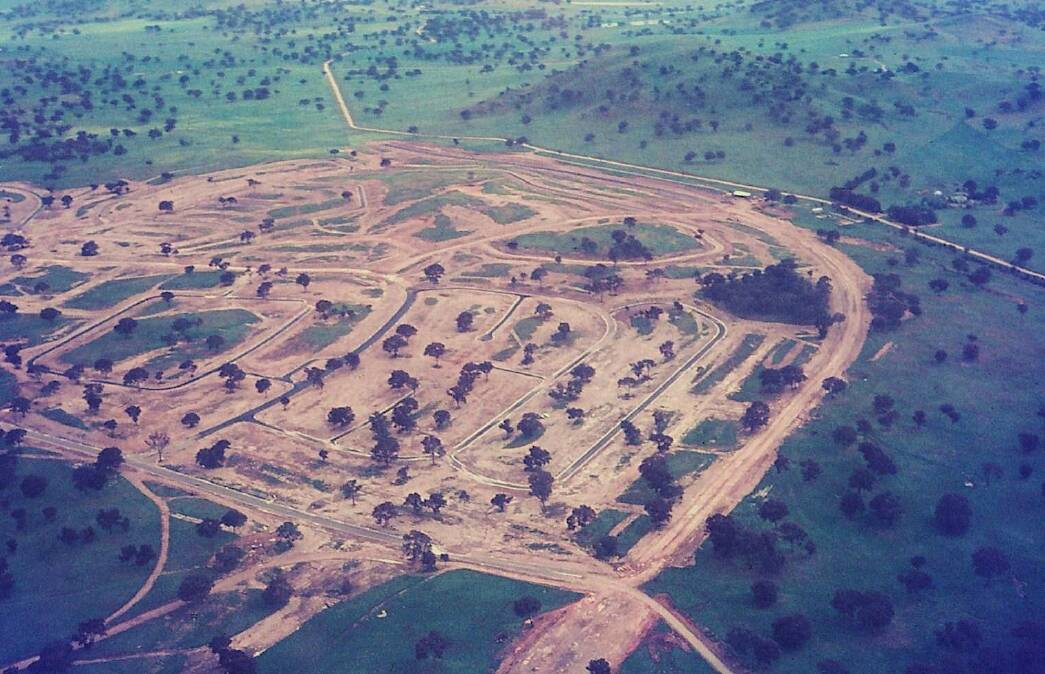
Last week: Congratulations to Jordan Gannaway of Holder who was the first reader to correctly identify last week's photo as the suburb of Fisher, under construction and looking out towards Mount Arawang and Kambah Pool Road. Jordan just beat several other readers to the prize, including former Fisher resident Jules Bray of Lake George, Maureen Marshall of Nicholls, and Emily Rushton, a long-time reader but first-time quiz entrant.
"Isn't it great to have a historic record like this," says Craig Collins of Coombs whose brother Geoff took the photo during a flight from Albury to Canberra in a Cessna in 1969.
"That's Kalgoorlie Crescent freshly sealed, left of centre," reveals Craig. "Stromlo High School now stands bottom left, and the Tuggeranong Parkway was later built to the left of the development."
SPOTTED
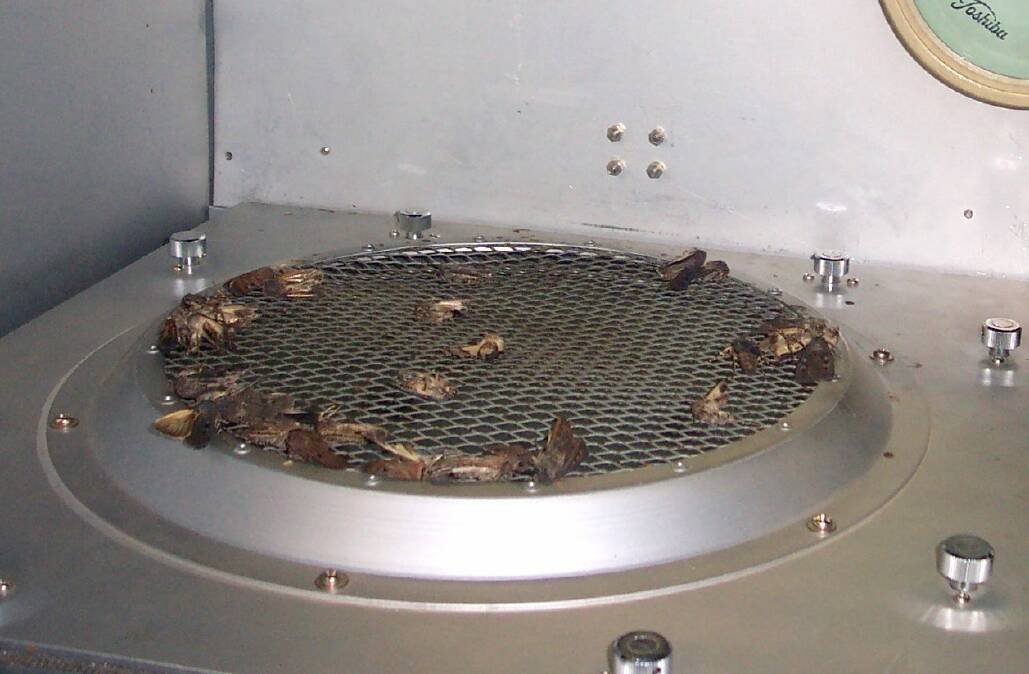
While recently waiting for coffee at Watson shops, Rodger Bean noticed a "blob" fall from one of the trees, closely followed by a currawong.
Upon investigating, Rodger found that the blob was a bogong moth, which he promptly relocated into an adjacent oak tree.
"I haven't seen one of these for years, hopefully it marks their return to the region," says Rodger, whose annual maintenance task during the late 1990s while working as a transmitter tech for Capital TV at Black Mountain Tower "was to clean the moths out of the old analogue TV transmitter".
SIMULACRA CORNER
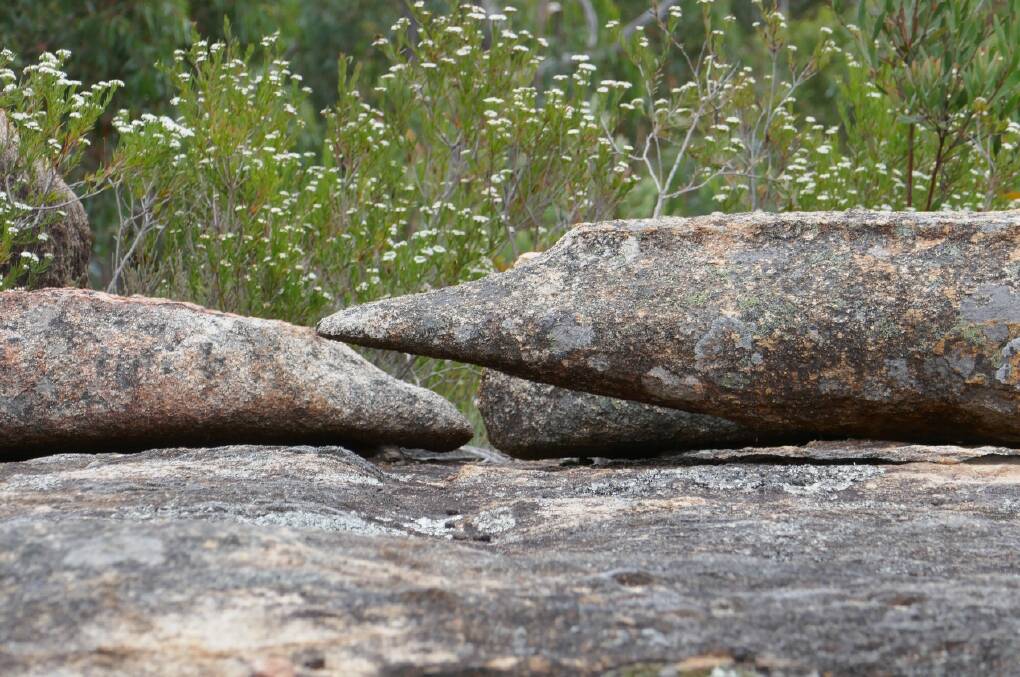
Serial simulacra submitter Markus Buchhorn is at it again. Do you remember the Concorde - the long-retired Franco-British supersonic airline? Markus reckons this rock formation on his property resembles two concordes nose-to-nose. What do you think?
CONTACT TIM: Email: tym@iinet.net.au or Twitter: @TimYowie or write c/- The Canberra Times, GPO Box 606, Civic, ACT, 2601
We've made it a whole lot easier for you to have your say. Our new comment platform requires only one log-in to access articles and to join the discussion on The Canberra Times website. Find out how to register so you can enjoy civil, friendly and engaging discussions. See our moderation policy here.







